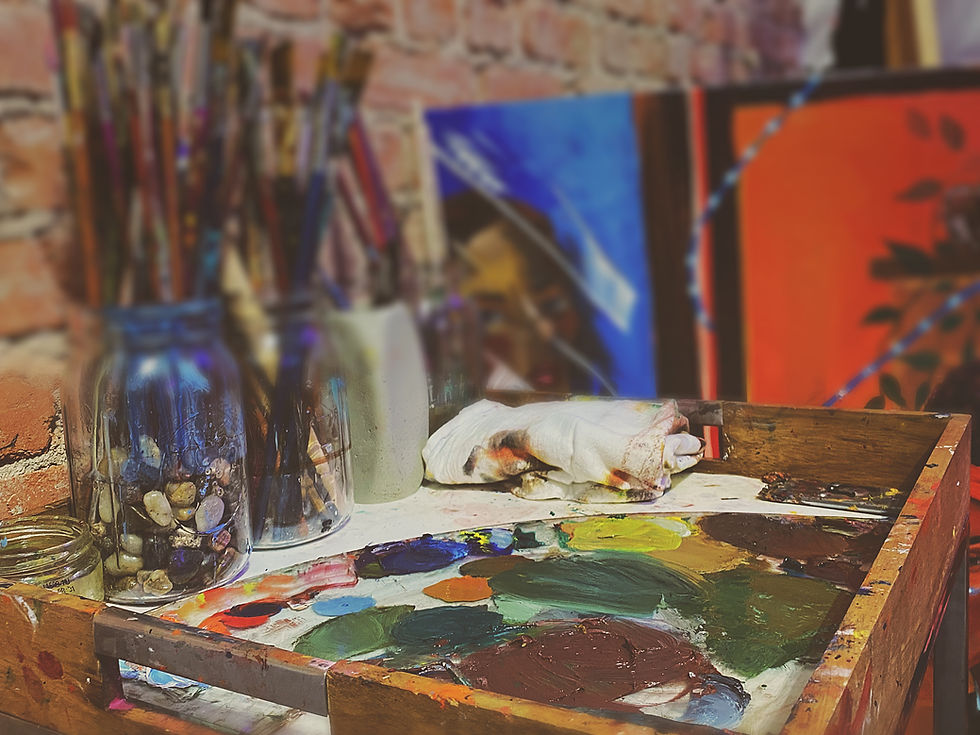
For many aspiring artists, the transition from Acrylic to Oil paint can bring a wave of uncertainty and anxiety. Often times, the act of starting with a new medium is daunting enough to keep you from beginning at all. In this blog I will be going over the essentials that any artist will need when making the switch from acrylic to oil.
Step 1: Supplies
Paint:
I suggest purchasing "Gamblin" or "Winsor&Newton" Artist Grade Paints.
Alizarian Crimson
Veridian Green
Cadmium Red Medium
Cadmium Yellow Deep
Yellow Ochre
Cobalt Blue
Ultramarine Blue
Titanium White
Brushes:
A variety of Long-Stem Flat or Round Brushes
Mixing Mediums:
Every Artist uses a different medium, these are a few options.
Linseed Oil
Sunflower-seed Oil
Grape-seed Oil
Turpentine
Personally, I use a half and half mixture of grape-seed Oil and Turpentine. I also use linseed oil separately for additional gloss.
(If you choose to use Turpentine exclusively, you will need to have access to a hazardous waste bin. This medium is highly flammable and because of this you should research it before purchasing for your own safety.)
You will Also Need:
Rags(I use old ripped up t-shirts)
Apron
Canvas'
Glass Palette 12x12 (Make sure you purchase safety glass)
White Paper 12x12
Easel(Optional)
Palette Knife
Paint Scraper
Step 2: Setting Up Your Palette
Take your 12x12 white paper and tape/glue it to the bottom of you 12x12 glass Palette, then flip it over and set it to the side.
Place all of your remaining supplies next to your palette.
When painting with Oil's you want to make sure that you have all of your supplies out in front of you at all times. You want them to be accessible before and during your working hours.
Begin to place your paints around the edge of your palette starting with titanium white, and ending with a mixture of Alizarin Crimson/Viridian Green(creating a warm black).
Most oil painters opt to use a mixed black vs. tubed black because it ensures your painting will remain warm. Tubed Black paint tends to have cool undertones.

Step 3: Be Environmentally Aware
As easy as it would be to just jump head first into oil painting, there are certain environmental factors that you should be aware of before beginning. Turpentine(the most common medium for oil painting) is a highly flammable substance. When using this product, make sure to fold the cloth you use to wipe your brushes with versus balling them up and throwing them away. Because of the chemical make up, balling up your turpentine-soaked linens can cause them to combust without cause. Additionally turpentine can pollute the water system if poured down the drain, I suggest purchasing a hazardous waste bin to dispose of all old rags and mediums.
If you choose to avoid using turpentine in your medium, I suggest using either grapeseed or sunflower seed oil. This medium is slightly harder to work with but is much more environmentally friendly. I still suggest purchasing a hazardous waste bin to protect yourself and you studio.
Conclusion
In the coming weeks I will be posting more in depth posts that dive into the specific areas of oil painting(paint mixing, brush types and textures, paint brands, viscosity and it's uses, etc.). For now, I would suggest setting up your palette and messing around with paint mixing and application. As oil paint is a new medium keep in mind that you have to rethink the way in which you approach painting. Take your time, be patient with yourself, and enjoy the transition as much as you can!
Comments